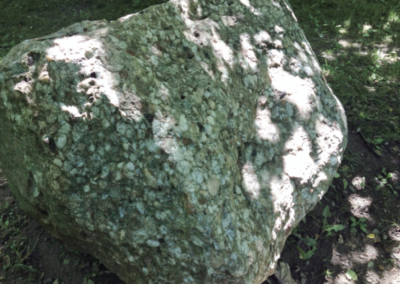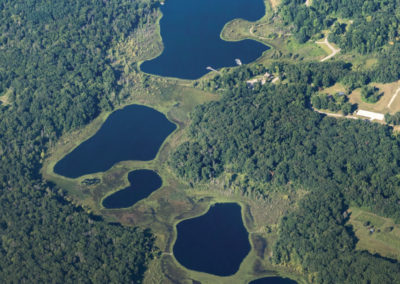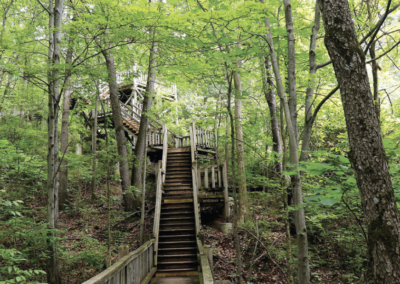The Nature of Water
Habitats and HomesMany in Steuben County are defined by it:
lakes – creeks – rivers – marshes – swamps – bogs

Marsh
Marshes are wetlands in the open. The water could be shallow, less than a foot, or up to two to three feet deep. Marshes are characterized by soft-stemmed plants, such as cattails, rushes, pickerel weed, and waterlilies. These emergents grow part in and part out of the water. Marshes may stand alone in the open or along the edges of lakes and rivers.

Swamp
Swamps are dominated by woody plants, trees and shrubs, such as red maple, buttonbush, spicebush, and dogwoods. Skunk cabbage is the first to appear in the spring followed by marsh marigolds, and countless ferns. Swamps are often shallow and may dry up some years leaving a rich, black, muck soil exposed.

Bog
Bogs tend to be more common is the glaciated areas further north, but there are some remnants in northeast Indiana. They form over glacial lakes over centuries, are often surrounded by woodlands, and covered with a floating peat mat resulting from a carpet of sphagnum moss. This mat becomes thicker as plants die and decay, often leaving an “eye” of open water in the center. Acid water and muck soils are homes for a unique community of plants..
Special aquatic Steuben County homes

Fish Creek
Fish Creek near Hamilton, Indiana is home for 43 different species of fish and 31 species of mussels, three of which are federally endangered: the Clubshell, the Rayed bean, and the Rabbits foot mussel.

Failing Lake
The cisco fish is the only native salmon found in Indiana waters, outside of Lake Michigan. The glacial lakes of northern Indiana are at the southern edge of their North American range. Cisco occur in only seven Indiana Lakes, two of which are in Steuben County, Failing Lake (Gentian Lake of the Pokagon State Park Trine State Recreation Area) and Lake Gage.
Steuben County Waterways
The Ice Age
The distinctive landscape of northern Indiana is a legacy of a continental glacier from the Wisconsin age.
The irregularly shaped hills, bogs, and lakes are underlain by an assortment of materials that melted from a rugged disintegrating ice sheet about 14,000 years ago.




















